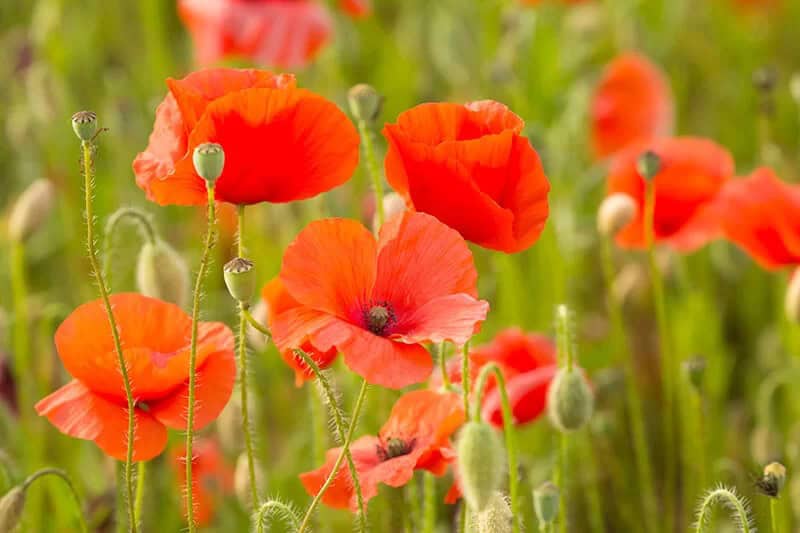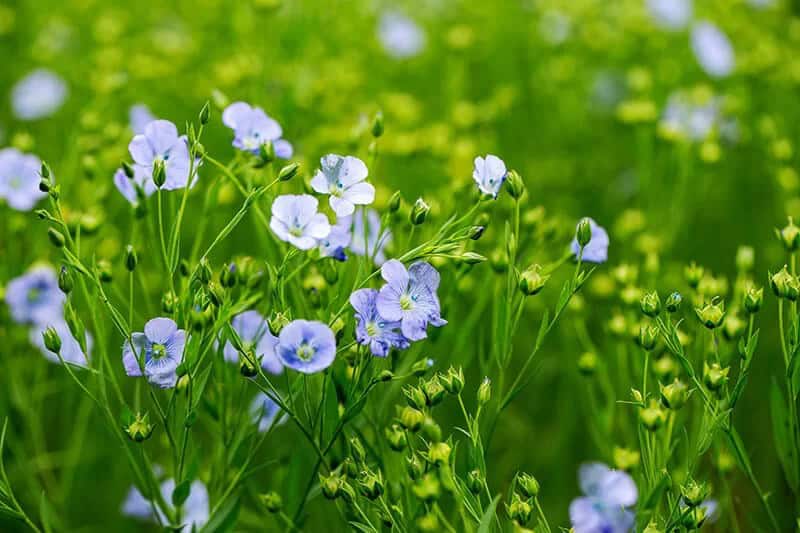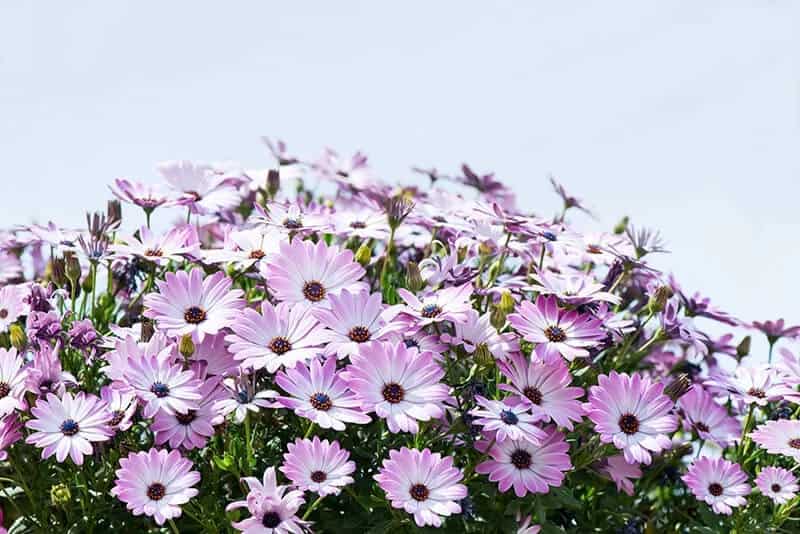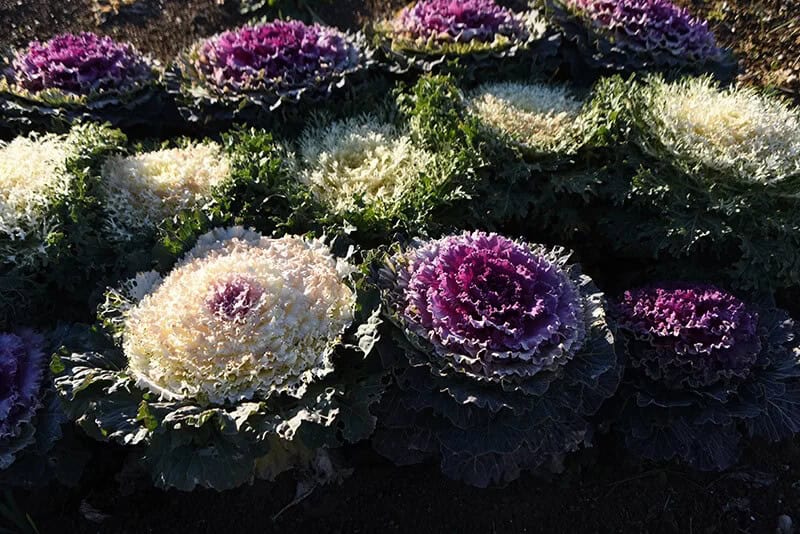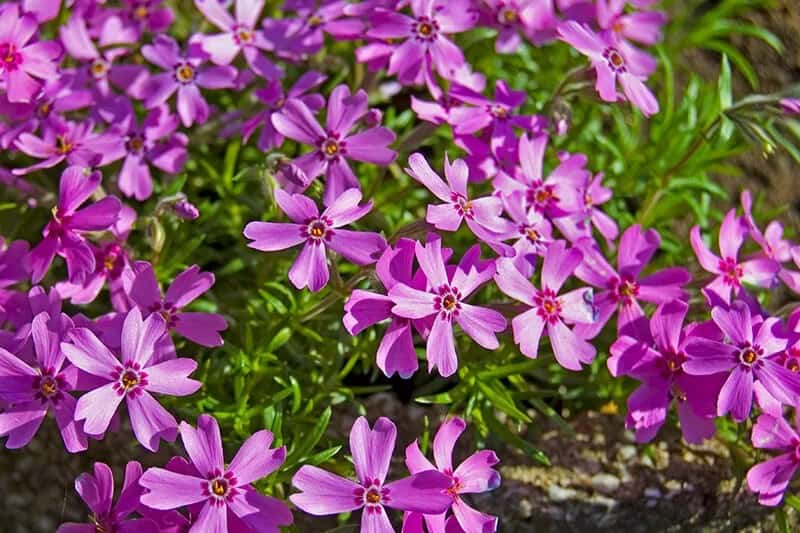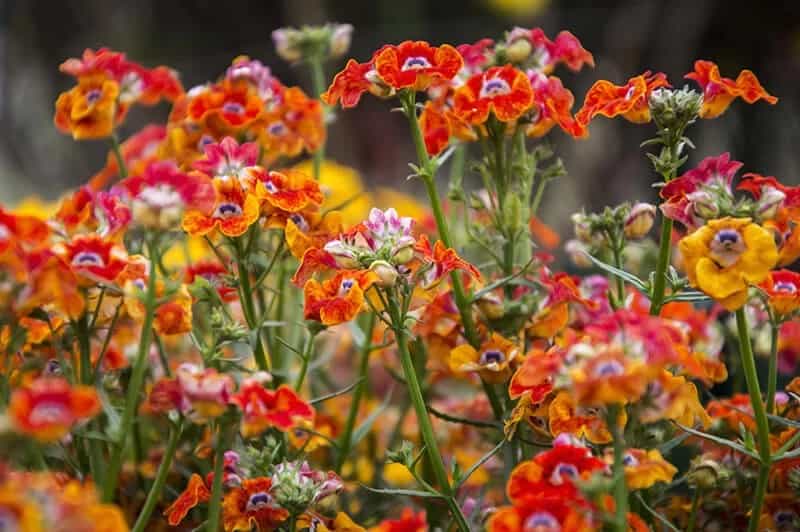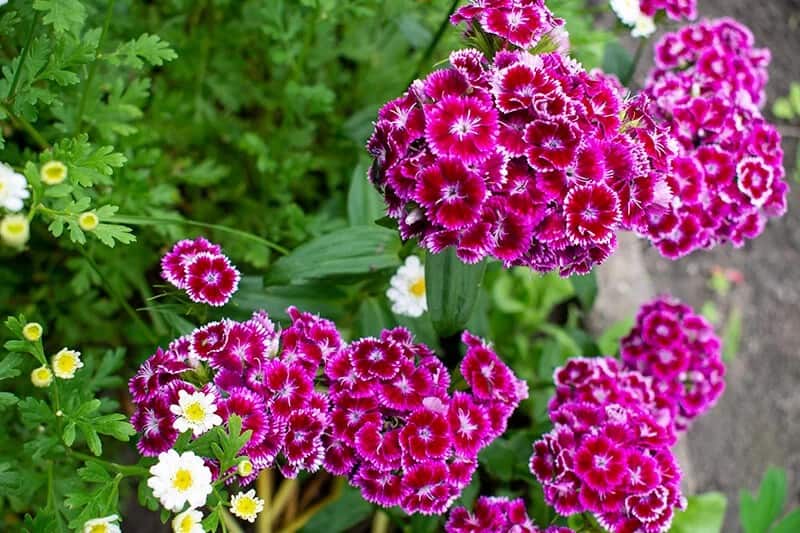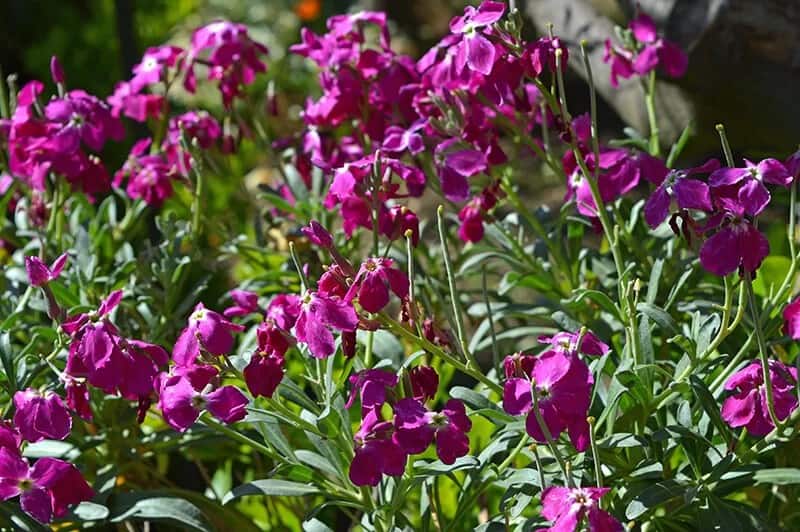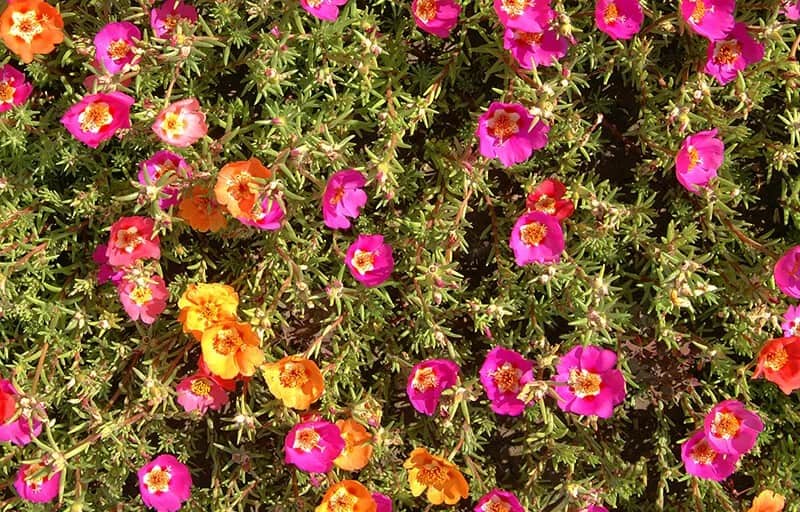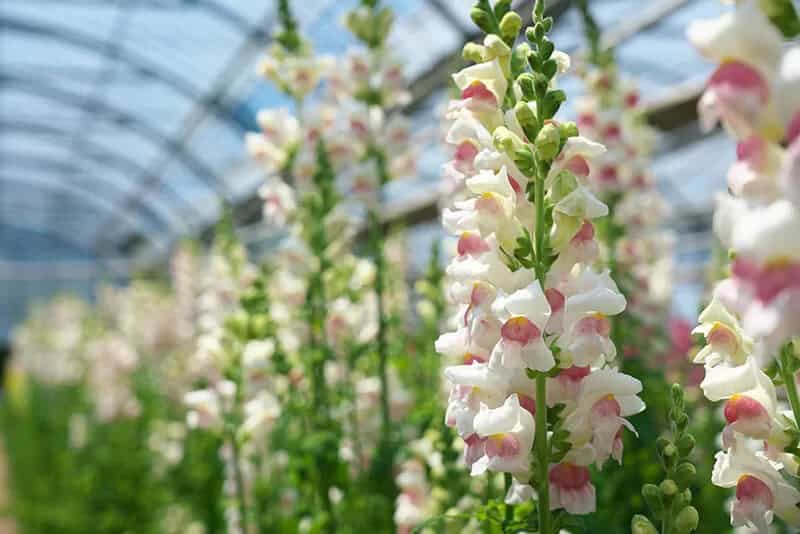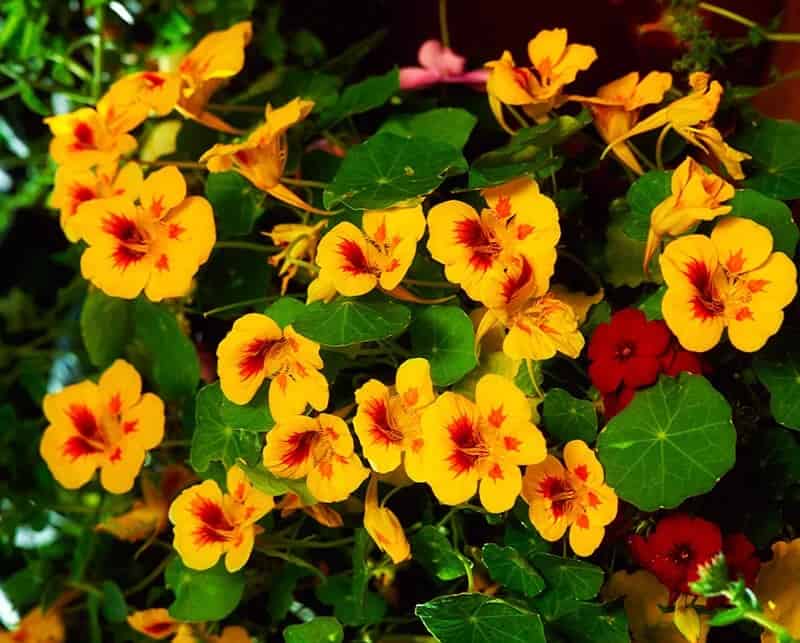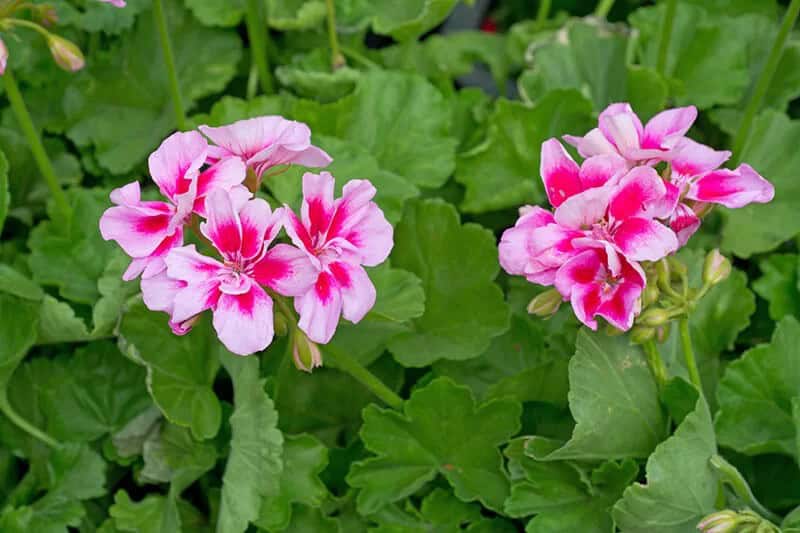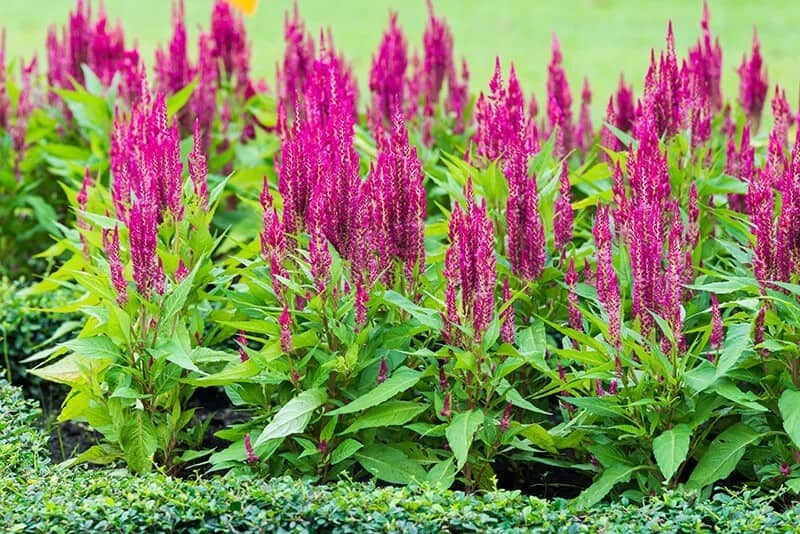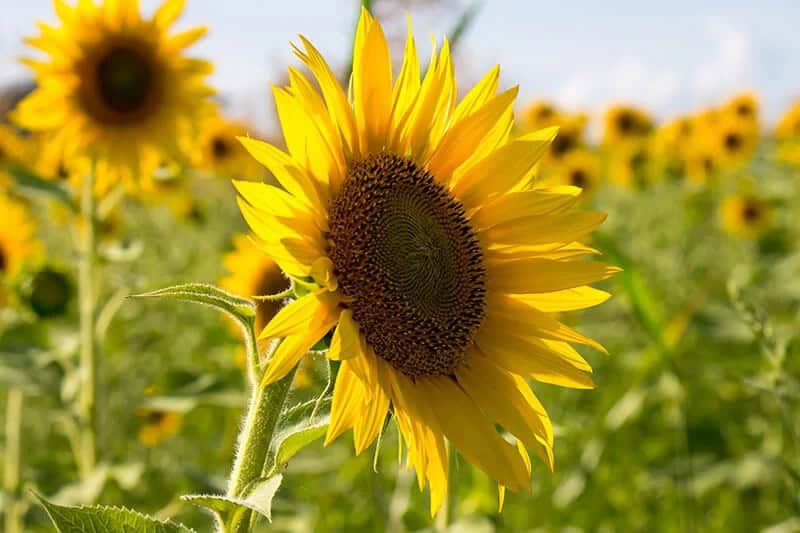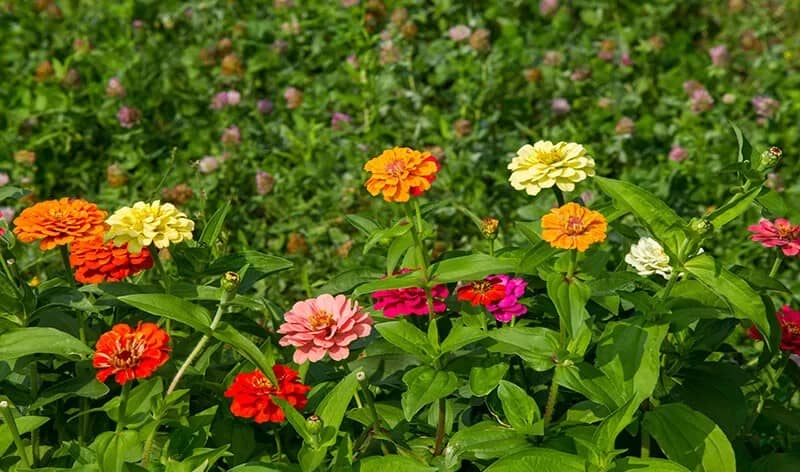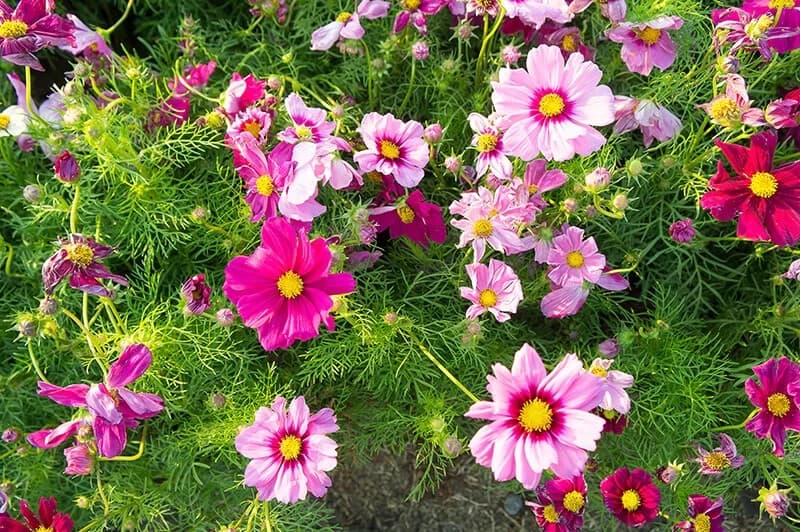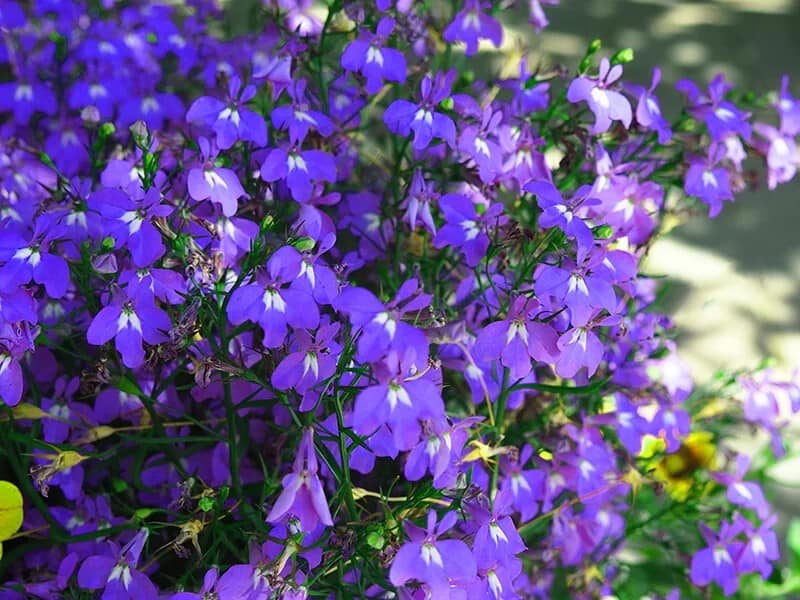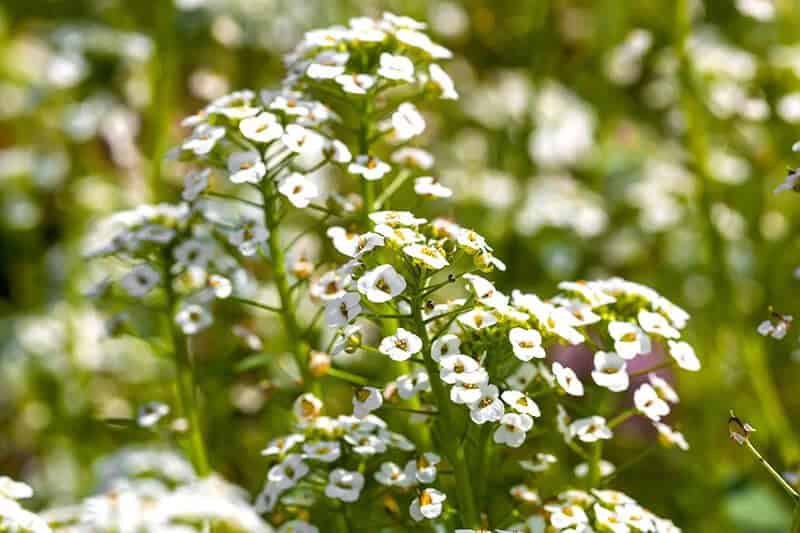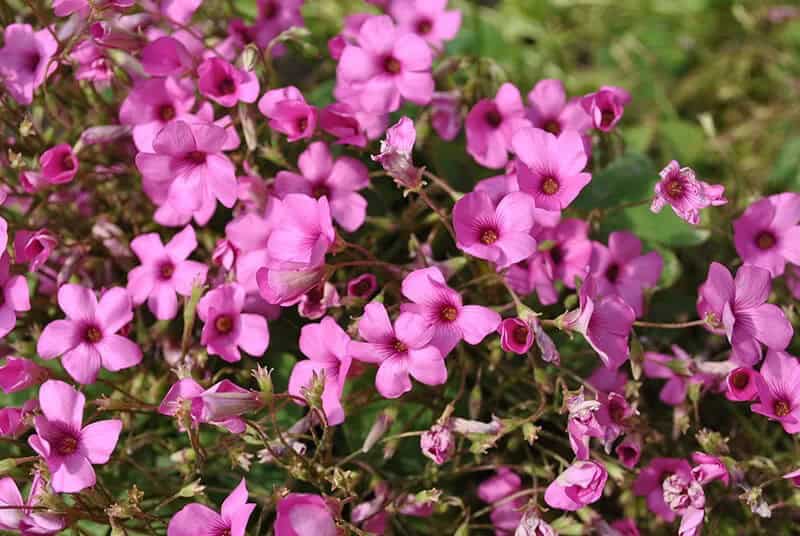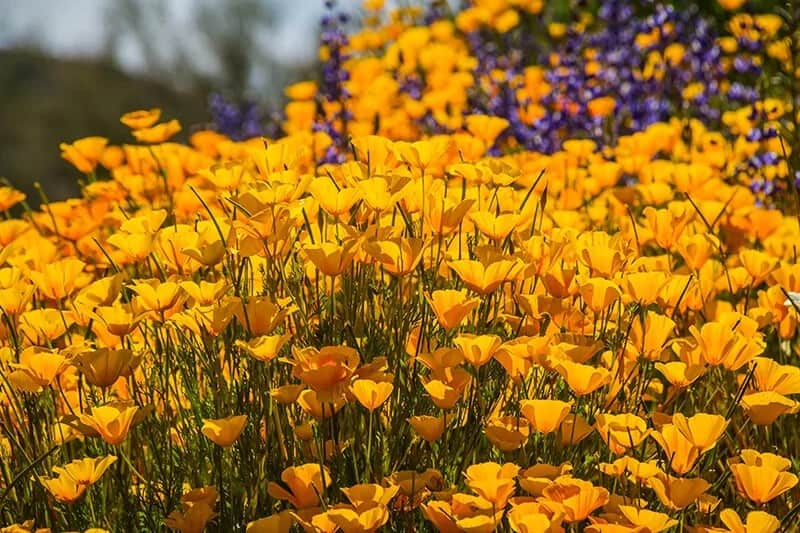Annual flowers are a diverse group that thrive for a single growing season, offering a wide range of shapes, sizes, and colors. They can be found thriving in various conditions across different regions. Gardeners delight in planting these vibrant blooms in their gardens and flower beds to enjoy the fleeting beauty they bring, typically emerging in late Spring.
27 Beautiful Annual Flowers To Bring Life To Your Garden
While annual flowers may not have the same durability as trees and shrubs, their versatility makes them an excellent choice for various aspects of a home’s landscape design. Unlike perennials that require careful consideration for long-term maintenance, annuals can be easily incorporated into different areas of a property, offering a degree of flexibility that is hard to match with more permanent landscaping features.
Poppy (Papaver)
Poppies, with their vibrant colors and delicate petals, embody the symbolism of loyalty. These charming flowers thrive in moderate climates, where soil remains consistently moist but also well-drained. Gardeners can coax them into bloom from April to May, depending on the region. In terms of size, poppies come in a range of variations, although certain areas are known for their larger blooms. To keep these beauties healthy, it’s crucial to strike the right balance between watering and drainage.
Too much moisture can lead to root rot, while extreme heat and cold can cause them to wither away. To ensure optimal growth, it’s essential to keep poppies away from high-traffic areas like streets and highways, where they might be damaged by intense heat or harsh conditions. By maintaining a consistent water supply, gardeners can help their poppy plants weather the short growing season without sustaining damage.
While poppies are generally easy to care for, they’re not as hardy when it comes to topsoil conditions. Cold temperatures and drought can be particularly challenging, causing them to perish. As such, gardeners must take extra precautions to ensure their poppy plants receive the right environment to flourish.
Flax (Linum Usitatissimum)
The flax plant, much like its poppy counterpart, boasts effortless growth and care. Sharing similar water and soil requirements, Linum thrives independently without relying on external assistance. This self-sufficient nature makes it an ideal choice for busy gardeners seeking a swift splash of color. With moderate water needs, well-drained soil preference, and a growing zone range of 3 to 8, this flower excels in full sun or light shade.
Blooming season typically occurs from April to May, further solidifying its low-maintenance appeal.
Cornflower (Centaurea Cyanus)
Cornflowers bring a pop of color and vibrancy to any garden. With their striking scarlet petals, these flowers can’t help but catch the eye. However, they’re also notoriously finicky, requiring precise conditions to thrive. To start, cornflowers need consistent high light and moderate heat – not an easy feat for novice gardeners with limited resources. They also demand specific watering habits to coax out their blooms.
A delicate balance of moisture is key; overwatering can lead to sogginess, while underwatering will stifle growth. Despite these challenges, cornflowers are a popular choice for annual flower gardens due to their rapid growth and relatively low maintenance requirements. Plus, they’re not suited for foundation or raised beds, making them a great option for gardeners looking to add some visual interest without committing to elaborate plantings.
African Daisy (Osteospermum)
African daisies are a vibrant addition to any garden, boasting a playful energy and charm. These flowers are surprisingly low-maintenance, requiring only moderate watering and thriving in well-drained soil. They can even tolerate drought conditions due to their early blooming habit. While they do require full sun or light shade to bloom fully, African daisies make up for it with their stunning beauty and sweet fragrance.
However, it’s essential to use them in moderation to avoid overpowering the rest of your planting. It’s also important to note that these flowers may not fare well in extremely cold temperatures and should be brought indoors during the winter season to ensure they survive.
Flowering Kale (Brassica Oleracea)
Flowering effortlessly in any soil type, these annual blooms are remarkably low-maintenance and adaptable. They thrive under full sun or partial shade, making them a perfect pick for busy gardeners who want to enjoy vibrant colors without the fuss of frequent watering and weeding. With their well-drained soil preferences, they’re just as happy in containers as they would be in-ground.
The upside is that these flowers are incredibly prolific, producing an abundance of seeds that can be used to sow winter vegetables and flowers. Overall, this variety is a thoughtful choice for anyone seeking a carefree yet still visually stunning garden experience.
Verbena (Verbena)
Verbena is renowned for its adaptability, making it a sought-after flower among gardeners. Beyond its striking appearance and intoxicating fragrance, this versatile bloom also yields nutritious leaves that can be used in soups and salads. One of its most notable features is its low-maintenance requirements: moderate watering, well-drained soil, and full sun or light shade are all it needs to thrive.
Its ability to tolerate drought and resist excessive water makes it an ideal choice for gardeners who prefer a more relaxed pace or lack the resources to devote extensive time to their plants. Verbena’s prolific seed production also makes it an excellent option for cultivating winter vegetables and flowers, offering a bountiful harvest with minimal fuss.
Pansy (Viola Tricolor var. Hortensis)
This stunning flower boasts a harmonious symbolism, making it an excellent addition to any garden. It thrives in moderate moisture levels, requiring frequent watering. The soil should be well-drained to prevent waterlogged conditions. Growing zones 3 to 8 provide the ideal environment for this beauty to flourish. While it can tolerate full sun or light shade, it’s essential to note that some afternoon shade may promote better blooming.
The late summer to fall blooming season is a highlight of this flower, with vibrant colors and long-lasting blooms that add a pop of color to any garden. What’s more, it’s incredibly low maintenance, resistant to drought, and doesn’t require extensive soil preparation before planting. This makes it an excellent choice for busy gardeners or those new to gardening. But what really sets this flower apart is its versatility.
The flowers, leaves, and seeds can all be used as unique vegetable ingredients, making it a popular choice for gardens that produce both vegetables and flowers. Plus, when planted in large quantities, it won’t overwhelm the rest of your plants or garden, ensuring a harmonious coexistence.
Nemesia (Nemesia)
Sweet William (Dianthus Barbatus)
The Delightful Poppies: A Low-Maintenance yet Vibrant Addition to Your Garden The poppy, with its striking symbolism of pleasure, is an excellent choice for any gardener seeking a low-fuss yet visually stunning addition to their outdoor space. Watering requirements are moderate, and the plant thrives when given regular hydration. In terms of soil conditions, well-drained soil provides the perfect environment for these flowers to flourish.
Gardeners in USDA Hardiness Zones 3-8 will find that poppies grow particularly well in their climate. As for light exposure, full sun or partial shade will encourage optimal growth and blooming. Expect vibrant displays of color during July and August when the poppy’s blooms reach their peak. One of this flower’s unique selling points is its abundance of seeds, making it an excellent option for cultivating winter vegetables and flowers.
Its beauty and rarity of colors make it a popular choice among gardeners looking to add a pop of brightness to their garden.
Stock (Matthiola Incana)
The striking blooms of this versatile plant have captivated garden enthusiasts for its low maintenance and adaptability to various soil types. Its remarkable ability to produce an abundance of seeds sets it apart as a prized addition to natural gardens, vegetable plots, and even winter harvests. Each part of the plant – flowers, leaves, and seeds – offers a unique flavor profile, making it an attractive option for gardeners seeking year-round culinary variety.
When grown in well-drained soil under full sun or light shade, this hardy perennial thrives in USDA zones 3 to 8, requiring minimal watering.
Scarlet Sage (Salvia Splendens)
The zinnia flower is a crowd favorite for spring and summer gardens in the United States. Its low water requirements, well-drained soil needs, and tolerance of full sun or light shade make it an ideal choice for many gardeners. This annual blooms from late summer to fall, producing stunning flowers that are rare in nature, making them highly sought after by those seeking a unique garden display.
Portulaca (Portulaca)
With its effortless growth and low-maintenance requirements, this stunning plant has become a favorite among gardeners of all levels. Not only does it thrive in well-drained soil and full sun or light shade, but it’s also remarkably versatile, making it perfect for small spaces like hanging baskets or containers. Its ability to produce an abundance of seeds makes it an excellent choice for natural gardens and vegetable plots.
As if its beauty weren’t enough, the plant’s blooms from mid-summer to late fall, adding a pop of color to any garden. Whether you’re a seasoned green thumb or just starting out, this lovely specimen is sure to bring joy and vibrancy to your outdoor space.
Vinca (Vinca)
The [Symbolism: Strong] Sedum plant boasts a unique combination of low water requirements (Low, occasionally), well-drained soil preference (Soil needs: Well-drained soil preferred), and adaptability to various growing zones (Growing zones: 3 to 8). It thrives in full sun or light shade conditions (☀️ Light needs: Full sun or light shade) and blooms from mid-summer through late fall (Blooming season: Mid-summer through late fall).
This low-maintenance plant is a great choice for natural gardens and vegetable plots, as it produces an abundance of seeds. The flowers, leaves, and seeds are all edible, making Sedum a popular selection among gardeners in areas where winter vegetables may be scarce. Its prolific seed production also allows for large-scale cultivation.
Million Bells (Calibrachoa)
The vibrant blooms of this stunning flower are not only breathtakingly beautiful but also highly symbolic, representing prosperity and good fortune. When it comes to growing conditions, this plant requires relatively low water needs, making it an excellent option for gardeners who want to conserve resources. Well-drained soil is also essential, as is full sun or light shade.
With a growth zone range of 3 to 8, this flower thrives in temperate climates and can be cultivated in containers or suspended baskets for added visual interest. Its impressive seed production makes it an attractive choice for natural and vegetable gardens alike, allowing gardeners to share their bounty with others.
Snapdragons (Antirrhinum)
Snapdragons, with their vibrant colors and ease of care, are a beloved ornamental flower in the United States. Not only do they thrive in well-drained soil and full sun or light shade, but they’re also prolific seed producers, making them an excellent choice for natural gardens and vegetable plots. In fact, every part of the snapdragon plant is edible – from the flowers to the leaves and seeds.
This versatility makes them a great option for gardeners living in areas where winter vegetables are scarce.
Nasturtium (Tropaeolum)
This striking flower, characterized by its symbolism of self-control, is a low-maintenance addition to any garden. It requires well-drained soil, full sun or light shade, and can thrive in USDA growing zones 2-10. Watering is minimal, with occasional needs met. Late summer through fall is the prime blooming season for this beauty. While it excels in raised beds or foundation beds, it also grows wonderfully in the ground without additional preparation.
The flowers themselves are a rare sight in nature, making them a sought-after choice among gardeners seeking to make their gardens truly unique.
Geranium (Pelargonium)
Geraniums are characterized by their striking symbolism – strength. These flowers require low to moderate watering, making them a great choice for those who tend to forget to water their plants occasionally. Well-drained soil is preferred, and they thrive in growing zones 3-8. While geraniums can tolerate full sun or light shade, they bloom most profusely during the mid-summer through late fall period.
One of the greatest advantages of geraniums is their ease of growth, requiring minimal care and attention. In fact, over-watering can be detrimental to these plants, so it’s essential to strike a balance. As a result, geraniums can grow rapidly, with blooms emerging in just weeks after planting. This low-maintenance beauty makes them an ideal choice for busy gardeners or those new to gardening.
Celosia (Celosia)
Celosia is an effortlessly thriving flower that boasts striking red blooms with a unique characteristic – it starts blooming bright red from the onset and gradually expands as the weeks pass. What’s more, this plant has a remarkable ability to spread its roots quickly, reaching maximum growth within just a couple of weeks after planting. In ideal conditions, Celosia can become invasive, especially in warmer climates where it can rapidly multiply without needing much moisture or attention.
To thrive, Celosia requires well-drained soil, full sun to light shade, and low water needs with occasional hydration. Its growing zones range from 2 to 10, making it a versatile choice for many regions. The blooming season typically spans mid-summer to late fall, offering a vibrant display of color during this period.
Sunflower (Helianthus)
The sunflower, a ubiquitous annual flower, is often grown in gardens and yards due to its approachability and pleasing characteristics. With its moderate growth requirements, the sunflower is an ideal choice for many gardeners. The plant’s symbolism is rooted in wisdom, making it a thoughtful addition to any outdoor space. In terms of specific needs, the sunflower thrives in well-drained soil, full sun or light shade, and can tolerate low water levels.
Its growing zones range from 2 to 10, allowing for cultivation in various climates. The plant’s blooming season typically spans early summer through late fall, providing a delightful display of color throughout the warmer months. Moreover, the flowers have a pleasant, mild scent that is enjoyable for people of all ages.
Zinnia (Zinnia)
Zinnia, an annual flower plant, is renowned for its striking appearance and effortless maintenance in any garden setting. This vibrant bloom has a relatively short lifespan of 15 to 20 days, making it perfect for providing fleeting yet impactful bursts of color throughout the growing season. With low water requirements, well-drained soil, and full sun or light shade conditions, Zinnia thrives in USDA zones 2 to 10.
Its blooming period typically spans late spring and early summer, offering a delightful display of beauty and color that enhances any garden landscape. As an added benefit, growing Zinnia allows novice gardeners to hone their skills while enjoying the simple pleasures of cultivating life’s smallest joys.
Cosmos (Cosmos)
The All-Seeing Eye: A Symbolic yet Vigilant Bloom This enchanting flower, with its delicate petals and petite stature, is a sight to behold as the breeze whispers through its blooms. Its vibrant colors seem to dance in harmony with the gentle rustle of leaves. With low water requirements and well-drained soil, this plant thrives in zones 2-10, basking in the warmth of full sun or light shade.
As late spring and early summer give way to blooming season, the all-seeing eye’s symbolism takes on a profound meaning – a reminder that even as it gazes outward, its secrets remain hidden from prying eyes. Despite its ease of growth and care, this flower’s allure lies not only in its beauty but also in the subtle mystique surrounding it, an air of mystery that only adds to its charm.
Lobelia (Lobelia)
The Lobelia plant is a beloved favorite among gardening enthusiasts, boasting stunning vibrancy and quick growth. Reaching its maximum height within just a week of sprouting, this beauty is sure to catch the eye with its showy blooms. The plant’s striking coloration stands out against its surroundings, making it a prized addition to any garden. With low water needs, well-drained soil, and full sun or light shade, Lobelia thrives in zones 3-8, blooming from early summer through late fall.
Alyssum (Lobularia Maritima)
The Alyssum flower’s delicate white petals create a visually stunning display in any garden setting. With a subtle fragrance, the blooms pose no risk to those handling them while still maintaining their pristine appearance. This charming plant is known for its clusters of white flowers that can be found growing abundantly, making it an excellent choice for creating a distinctive and eye-catching feature in one’s yard.
The ideal conditions for Alyssum include low water needs, well-drained soil, and a growing zone between 5 to 10. It thrives in full sun or light shade, with its blooming season spanning from early summer through late fall.
Impatiens (Impatiens)
The Impatiens’ captivating charm lies not only in its vibrant, attention-grabbing petals but also in the intoxicating fragrance emitted by its blooms. This eye-catching plant thrives in well-drained soil, tolerates low watering needs, and flourishes in zones 3 to 8 under full sun or light shade conditions. Its mid-summer through late fall blooming season only adds to its allure.
Whether planted individually or arranged in small bouquets throughout the garden or home, Impatiens’ beauty and alluring aroma combine to create a truly unforgettable experience.
Marigold (Tagetes)
Marigold’s bright orange hue makes it a popular choice among gardeners, prized for its ability to lure insects and pollinators with its vibrant blooms. As a low-maintenance option, it thrives in well-drained soil and can tolerate some neglect, making it perfect for busy gardeners. With a growing zone range of 3 to 10, marigold is suitable for most climates.
While it does require full sun or light shade, the reward is well worth the effort – a burst of color throughout the summer months that’s not overpowering by strong scents.
California Poppy (Eschscholzia californica)
The humble yet striking orange flower, though not widely cultivated in the United States, enjoys immense popularity across various global regions. Its vibrant petals boast a radiant orange hue that remains consistent from any angle, rendering it an undeniable showstopper for any garden. The flowers’ bold coloration and delicate outline make them a coveted addition to outdoor spaces, effortlessly standing out amidst surrounding flora.
Sweet Pea (Lathyrus odoratus)
The sweet pea flower, characterized by its dainty appearance and potent aromas, is often admired for its subtle charm. However, gardeners may need to exercise restraint when cultivating this plant, as it has the potential to spread beyond control if left unchecked. The flower’s delicate petals have a symbolic significance, representing something that people would like to hold onto for a brief moment – a concept closely tied to fascination.
As it thrives in well-drained soil and full sun or light shade, sweet pea flowers typically bloom from mid-summer through late fall, making them a delightful addition to any garden. Its growing zones range from 3 to 10, allowing it to flourish in a variety of environments. Despite its low water requirements, this flower is sure to captivate with its intoxicating scents and charming appearance.
27 Best Annual Flowers To Bring Your Garden To Life
Annuals offer a convenient way to add a pop of color and attract pollinators and insects to your outdoor space. Unlike perennials, they’re often more budget-friendly and can be easily swapped out each year to keep things fresh. With so many varieties to choose from, you can find the perfect blooms to match your style or theme. Plus, by opting for a pre-curated flower garden, you’ll get to enjoy the added symbolism of each plant, which can be a lovely touch.
Ultimately, incorporating annuals into your landscape design will provide an effortless way to boost its visual appeal and draw attention from passersby.
